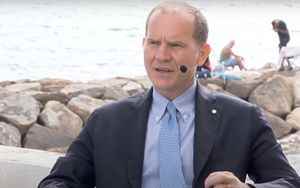(Finance) – “In the current situation of instability we have two certainties: the increase of the population and the World GDP compared to the decrease of the agricultural area and the need to protect the natural resources. A challenge to be dealt with immediately by giving effective responses, also to the shock light exteriors produced by pandemic, war and climate change “. This was stated by the president of Confagricoltura, Massimiliano Giansantispeaking during the Rimini Meeting at the convention “Promote growth and support the weakest”.
“Agriculture is strategic not only for individual countries, but for the whole world – said Giansanti -. Citizens are paying a high price for food and at the same time part of the world population does not have access to food. In recent months, the price food index FAO touched on peak of 160 never reached before, nor during the pandemic (98) and not even during the 2008 global financial crisis (117) “.
“The tools to avoid a world of two speed I am “infrastructure investments, sharing of knowledge and development of rural areas – continued the president of Confagricoltura -. For this you need one overall agricultural policy strategybut also of nutrition, food and energy. In the world 870 million people suffer from hunger but the number of overweight people increases Developed countries (1.7 billion) and food waste, equal to 74 kilos of food per capita “.
Giansanti recalled that of the 570 million only 1% active farmers in the world it is structured in the form of an enterprise and produces 70% of the food for the market.
For the president of Confagricoltura “agriculture must be the protagonist in the energy and environmental transition paths. The increase in food prices is in fact closely linked to that of energy costs. The primary sector can make a further contribution in this area, but it must be put in place conditions to do so. Not only with the resources of the PNRRbut also with a real simplification of burocratic procedures”.
“The time has come for choices and the next government – concluded Giansanti – will have to achieve the strategic objectives of the country. We will have a very difficult October: market instability will continue to push price growth, and therefore families, to review their food purchasing policy. Already today a survey by Agronetwork and Format Research describes the propensity to buy this way: 13% do not know if it will change; 27% will choose day by day; 28% will spend the same amount but with less purchasing power; the remaining 31% know they will spend more. There is no more time to waste “.
